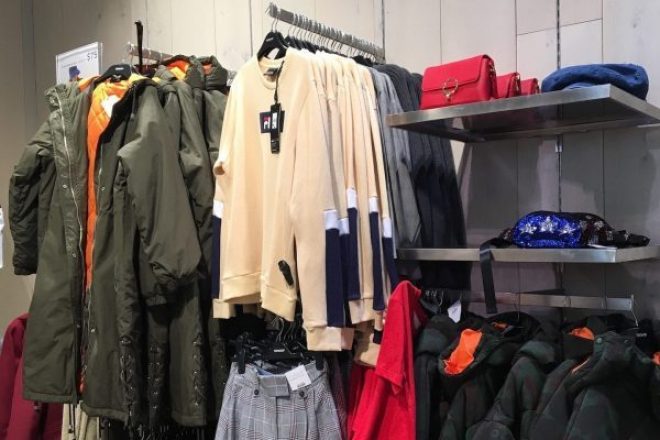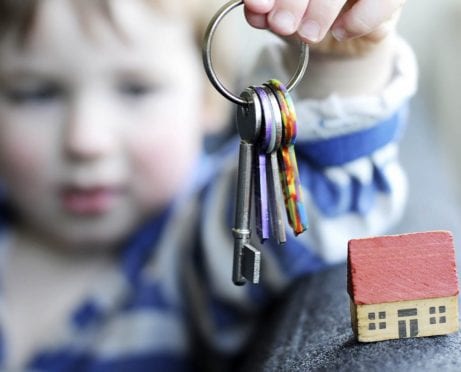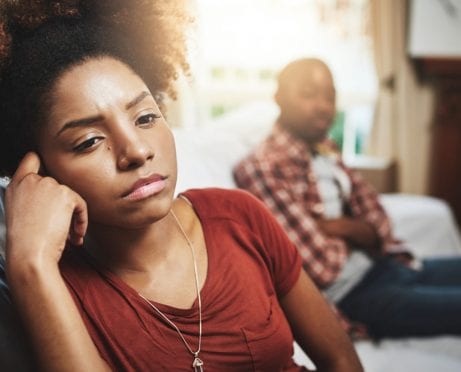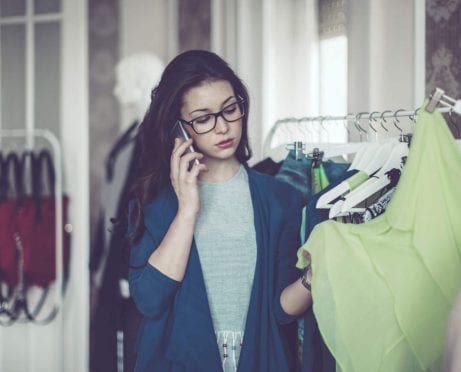
Emma Finnerty
 A while ago, I stood in a dressing room of one of my favorite clothing stores, wearing a hot, red dress. It looked perfect on me, a rarity when you have a unique body type like mine. But there was one problem: I couldn’t buy it.
A while ago, I stood in a dressing room of one of my favorite clothing stores, wearing a hot, red dress. It looked perfect on me, a rarity when you have a unique body type like mine. But there was one problem: I couldn’t buy it.
It’s not that I didn’t have any money. The price wasn’t a factor, either, since it was on clearance. The issue was a resolution I made to myself at the beginning of that year. I was going to stop buying clothes (including shoes and accessories) until December.
I restricted myself by not buying unnecessary clothing as a part of my shopping freeze. While I did allow myself to borrow or trade with friends (which I did somewhat frequently), I couldn’t use actual money to purchase anything unless it was explicitly necessary.
While it’s easy to understand the rules of a clothing fast, sticking to the plan was much tougher than I anticipated.
Download This Personal Finance App Now
How to Approach a Shopping Freeze
Don't look at a shopping freeze as a long-term solution to financial difficulties. It worked for me not only because I targeted one part of my budget I knew I could cut down, but also because I knew that said freeze wouldn’t directly affect my quality of life or general happiness.
The average family of four spends $1,800 a year on clothing, according to the Financial Best Life. But did my family really need to spend that much?
It's also important to maintain a level of frugality well after your freeze is over in order to avoid binge spending with what can easily be viewed as “extra” money, eliminating your well-earned surplus cash.
What to Focus On During Your Shopping Freeze
“Focus your attention on freezing expenses that make a significant difference in your budget,” says George Krueger, co-creator of BIGG Success, a financial coaching platform. “Small costs won’t matter, so look at your larger expenses. In some cases, you may be best served by eliminating an expense altogether, rather than freezing it.”
A big shopping freeze is akin to a crash diet.
It may seem like a fast way to save money in a short period of time, but it’s often less sustainable over the long term.
When it comes to food, eating less in the short term may shave off 10 pounds, but healthy eating is what helps you maintain long-term goals. The same holds true for money habits. It may seem boring, but building good financial routines pays you back over time.
When Life Gives You Lemons, Squeeze ’em for Juice
With all that said, sometimes life throws you a curveball. For example, let’s say you lose a side hustle. You might quickly land in debt if you don’t do something.
Start by looking at things in your budget that are nice to have, but that aren't necessary. These items can include dining out, streaming subscriptions, impulse shopping, or even your daily coffee from Starbucks, which can run about $5 a pop. By eliminating a latte from your everyday purchases, you could save yourself $35 a week and more than $1,800 annually.
Benefits and Challenges of Deciding to Stop Buying Clothes
The temptation was everywhere during my shopping freeze. Because I am constantly buying clothes for my growing daughter, it’s not as if I could avoid it, and it doesn’t help that women’s clothing screams for your attention, offering two-for-one sales and clearance racks galore. Then there were needs I couldn’t foresee, like having to sell and buy some tops as part of a fundraiser.
About two months into my decision to stop buying clothes, I had to make a few adjustments. For one, I allowed myself to replace clothes if they fell apart — past the point of my limited sewing abilities that is.
I also gave myself a small quarterly budget for special events for which I couldn’t recycle clothing. Luckily, I had to tap into that fund only once, for a networking event that required me to wear a blazer I didn’t own and couldn’t borrow.
Based on my estimates, I saved over $550 that year from not buying new clothes.
That $550 may not seem like much, but it certainly contributed to paying down $20,000 of debt that my husband and I had.
How to Stop Buying Clothes and Control Your Spending
A clothing fast doesn’t have to last a full year or start on January 1. You can begin and maintain your shopping freeze by remembering the following tips.
I fall easily for flash sales and mega clearances, especially when they’re delivered to me via email. Go ahead and unsubscribe from marketing emails — you’ll be fine without them.
Get Yourself an Accountability Shopping Buddy
Though I do most of my shopping alone, my husband was great about checking in to make sure I was honest. I hate to admit this, but he helped me exercise restraint every time I felt compelled to cheat.
Make a Spreadsheet for Your Budget
A great supplement to a strict budget can be a spreadsheet you update regularly to help you track the costs of all of your expenses.
“It could even allow you to still spend a little on certain ‘extras,’” as long as you don’t go overboard,” says Shane Walker, vice president of fintech company ProActive Budget, now Qube Money. “I’d recommend using a spreadsheet and monitoring your account online so you always know what is coming in and what is coming out.”
Track Your Savings
I’m a numbers person. I need to see the savings as motivation to continue the shopping freeze. I estimate that I saved $40 to $50 each month — an amount that I would’ve spent on clothes otherwise.
Identify Spending Triggers
Think about when you feel like you have to buy something. What’s causing it? Is there anything in particular that makes you want to spend?
“Do you take a midday caramel macchiato break when you’re stressed at work, or are you guilty of Amazon one-click shopping?” asks Sara Skirboll, a shopping and trends expert and writer. “Instead of whipping out your wallet at every chance, a shopping freeze gives you the opportunity to try things in a new way.”
Manage Your Finances With This Free App
Learn to Shop Your Closet Instead of Buying New Clothes
I used to roll my eyes when my husband suggested this to me. Nothing in my closet was new or different. Everyone had seen me in this dress or that blouse already!
But when I forced myself to get creative with what I had, I realized I could make five or six different looks from just a sweater, a dress, and a pair of leggings or tights. Pinterest, in particular, helped me play around with my basics, making it easier to stop buying clothes.
Don’t Go Nuts When It’s Over
When your freeze is finally over, don’t let that money you worked hard to save burn a hole in your pocket.
“Just like you wouldn’t want to end your Whole 30 diet with a day of eating and drinking everything in sight, you don’t want to undo all your hard savings work by shopping until you drop after your spending freeze is over,” Skirboll says.
“Plan for only essential purchases and make sure to check your favorite coupon apps for additional deals and cash-back offers to maximize your savings,” she adds.
A Final Thought on My Shopping Freeze
Whatever you decide to temporarily stop purchasing, just keep your endgame in mind and remember to track your savings to keep perspective on why you are doing this to begin with.
Not long after I started my yearlong spending freeze, I stopped noticing the lack of shopping bags and credit card bills. The decision to stop buying clothes gave me a year of better budgeting and self-satisfaction for what I already had. FOMO be damned!
Additional reporting by Jazmin Rosa and Connor Beckett McInerney











